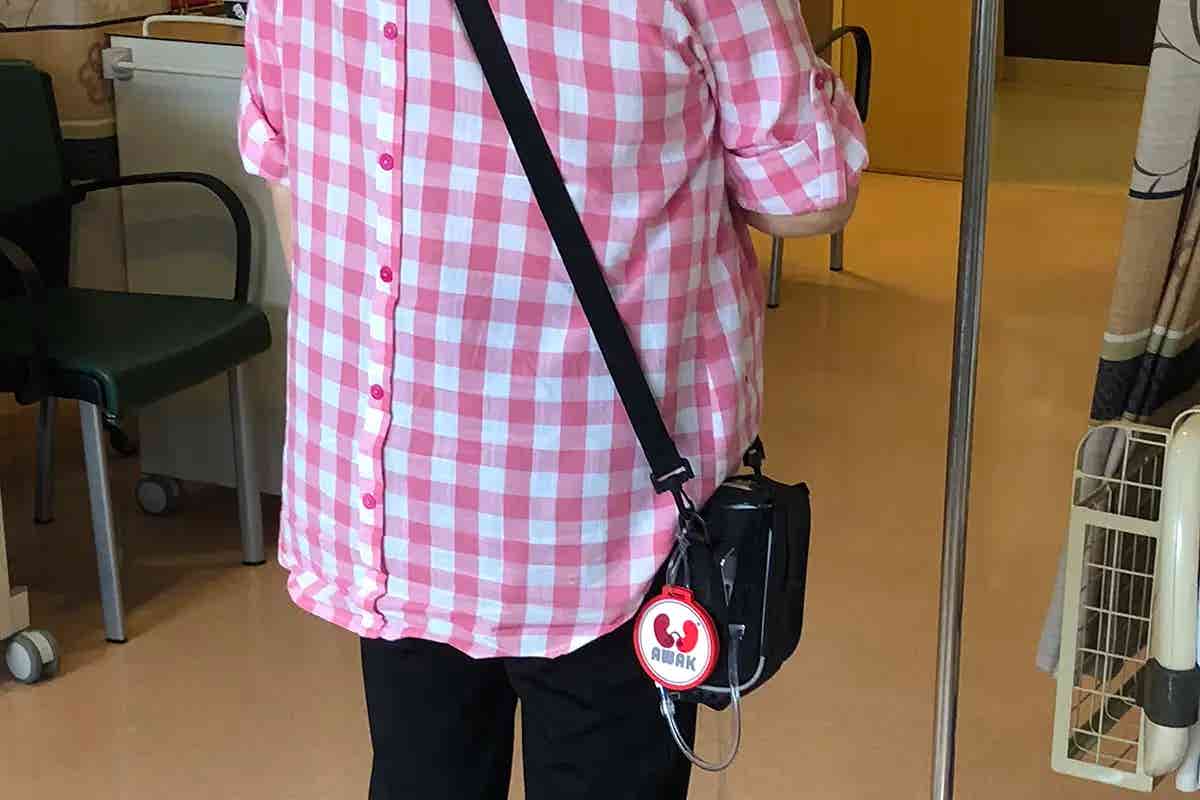Compact, wearable, artificial kidney revolutionizes kidney treatment
A new wearable dialysis device using ICP tech may transform kidney failure care and improve quality of life.

Sample image reflecting what the wearable artificial kidney could look like. (CREDIT: Marjorie Foo)
Kidney failure affects millions worldwide, and the number keeps rising. Each year, the global population of patients with end-stage renal disease (ESRD) grows by about 5 to 7%. This condition leads to permanent kidney failure, and even with regular dialysis, the risk of death—especially from heart-related problems—remains alarmingly high.
People with ESRD face a 30-times higher risk of dying from cardiovascular causes than those with healthy kidneys. In the United States alone, adjusted mortality rates reach 136 deaths for every 1,000 patient-years.
The cost of care adds another heavy burden. In 2013, Medicare spent over $30.9 billion on ESRD patients, making it one of the most expensive chronic conditions to manage. To stay alive, patients must choose between kidney transplants, hemodialysis (HD), or peritoneal dialysis (PD).
Transplants offer the best outcomes, including longer life, better quality of life, and lower long-term costs. But donor shortages leave many with no choice but to turn to dialysis.
Understanding How Dialysis Works
Hemodialysis is the most widely used method. It involves using a machine to filter waste and extra fluids from your blood. Most patients go to a clinic three times a week, where they undergo 4-hour sessions. That means all the waste and fluid that builds up over two or three days must be removed in a short window. These big swings in fluid, electrolytes, and acid levels often harm the heart and can raise the risk of complications.
Peritoneal dialysis offers a different path. Instead of relying on a machine, your own body becomes part of the treatment. A special fluid, called dialysate, is placed into your abdominal cavity. Over 4 to 6 hours, it absorbs waste products like urea, creatinine, potassium, and phosphate. Then, you drain the fluid and replace it.
PD allows for more freedom, especially for younger or more active people, because it mimics the kidneys’ natural “continuous filtration” process. This can preserve any remaining kidney function and gives patients more flexibility with diet and scheduling.
Related Stories
Studies show that PD often leads to better survival, especially in the first two years. In some cases, its benefits continue even after a kidney transplant.
The Barriers Holding Back PD
Despite its strengths, PD still lags behind HD in popularity worldwide. Why? The process requires patients to handle bulky dialysate bags and perform frequent fluid exchanges on their own. Infections, weight gain, and other complications like diabetes or metabolic syndrome are also common. And while PD does a decent job of filtering waste, it’s not as efficient at removing all harmful toxins from the blood.
There’s a growing interest in improving this method, especially with the help of technology. One way forward might be a portable PD system that recycles used dialysate, cutting down on waste and effort. Current ideas include using biochemical filters or membranes to clean the fluid, but these often clog or require frequent replacements.
A Tiny Tech Breakthrough with Big Promise
Researchers have recently turned to ideas from water treatment to solve these problems. Instead of large-scale systems, they’re exploring smaller, energy-efficient technologies. Electrochemical methods like electrodialysis, electrodeionization, and capacitive deionization can all remove ions from water. But they struggle when it comes to clearing both charged and uncharged waste molecules—like urea or creatinine—at the same time.
That’s where a newer method, called ion concentration polarization (ICP), steps in. This nanoelectrokinetic process can remove a wide range of contaminants in a single step. It works by placing a special membrane between two electrodes and applying an electric field. This field creates a zone where ions are either pulled in or pushed out, depending on their charge. Urea, a neutral molecule, doesn’t respond to electric fields—but it can still be broken down chemically at the electrode surface.
In a recent study, scientists developed a compact, wearable PD system using this ICP-based method. The device uses a cation exchange membrane to filter positive ions, electrostatic repulsion to remove negative ions, and chemical reactions to break down neutral molecules like urea. As the concentration of urea falls near the electrode, more of it flows in and continues to be destroyed in a chain reaction.
A 3D-printed version of this system was built to increase flow rates. The device’s small, maze-like channels keep the fluid stable and allow efficient waste removal. Compared to conventional PD setups, this continuous system could reduce the need for frequent exchanges and lower the risk of infections and complications.
From the Lab to Living Rooms
To test the idea, the team tried it on both used dialysate from patients and rats without functioning kidneys. The results were promising. The upgraded microfluidic design could handle up to one milliliter of fluid per minute—about 1,000 times faster than early lab setups. When used on rats, the system cleared around 30% of waste per dialysis cycle.
This breakthrough came from a team of researchers at Seoul National University’s College of Engineering, led by Professor Sung Jae Kim. They worked closely with the university’s hospital and medical school, as well as Hallym University. Their work was published in the Journal of Nanobiotechnology, a respected journal in the field.
“The commonly used dialysis method requires bulky machines and hours in the hospital each week,” said Professor Kim. “This new device goes beyond just shrinking the equipment. It can improve patients' lives, reduce costs, and expand access to care.”
The device could have a big impact in low-income or rural communities, where regular access to hospital-based dialysis is limited. Patients could regain some mobility and live more freely, with fewer interruptions to their daily routine.
The Road Ahead
Of course, the device still needs to go through safety testing, clinical trials, and government approvals before it’s ready for use. But many experts believe the technology holds real promise.
Professor Jung Chan Lee, who specializes in nephrology, said, “While there’s still a long way to go, this research secures the basic technology that could change how we treat kidney failure.”
Another contributor, Professor Gun Yong Sung from Hallym University, added, “This is the first time nanotechnology has been applied this successfully to artificial organs. It’s rewarding to think this might help dialysis patients live better.”
Professor Yon Su Kim echoed that view. “Chronic kidney disease patients have struggled to maintain a normal lifestyle. If this becomes available, they’ll be able to stay active and manage their health more smoothly.”
Dr. Wonseok Kim, a lead author of the study, is now working at Seoul National University on other wearable biotech devices. His co-author, Professor Sunhwa Lee, is a practicing nephrologist at Kangwon National University Hospital.
The potential of this invention is huge. It offers more than convenience—it could give people with kidney failure a chance to reclaim their time, health, and independence.
Note: The article above provided above by The Brighter Side of News.
Like these kind of feel good stories? Get The Brighter Side of News' newsletter.
Rebecca Shavit
Science & Technology Journalist | Innovation Storyteller
Based in Los Angeles, Rebecca Shavit is a dedicated science and technology journalist who writes for The Brighter Side of News, an online publication committed to highlighting positive and transformative stories from around the world. With a passion for uncovering groundbreaking discoveries and innovations, she brings to light the scientific advancements shaping a better future. Her reporting spans a wide range of topics, from cutting-edge medical breakthroughs and artificial intelligence to green technology and space exploration. With a keen ability to translate complex concepts into engaging and accessible stories, she makes science and innovation relatable to a broad audience.



